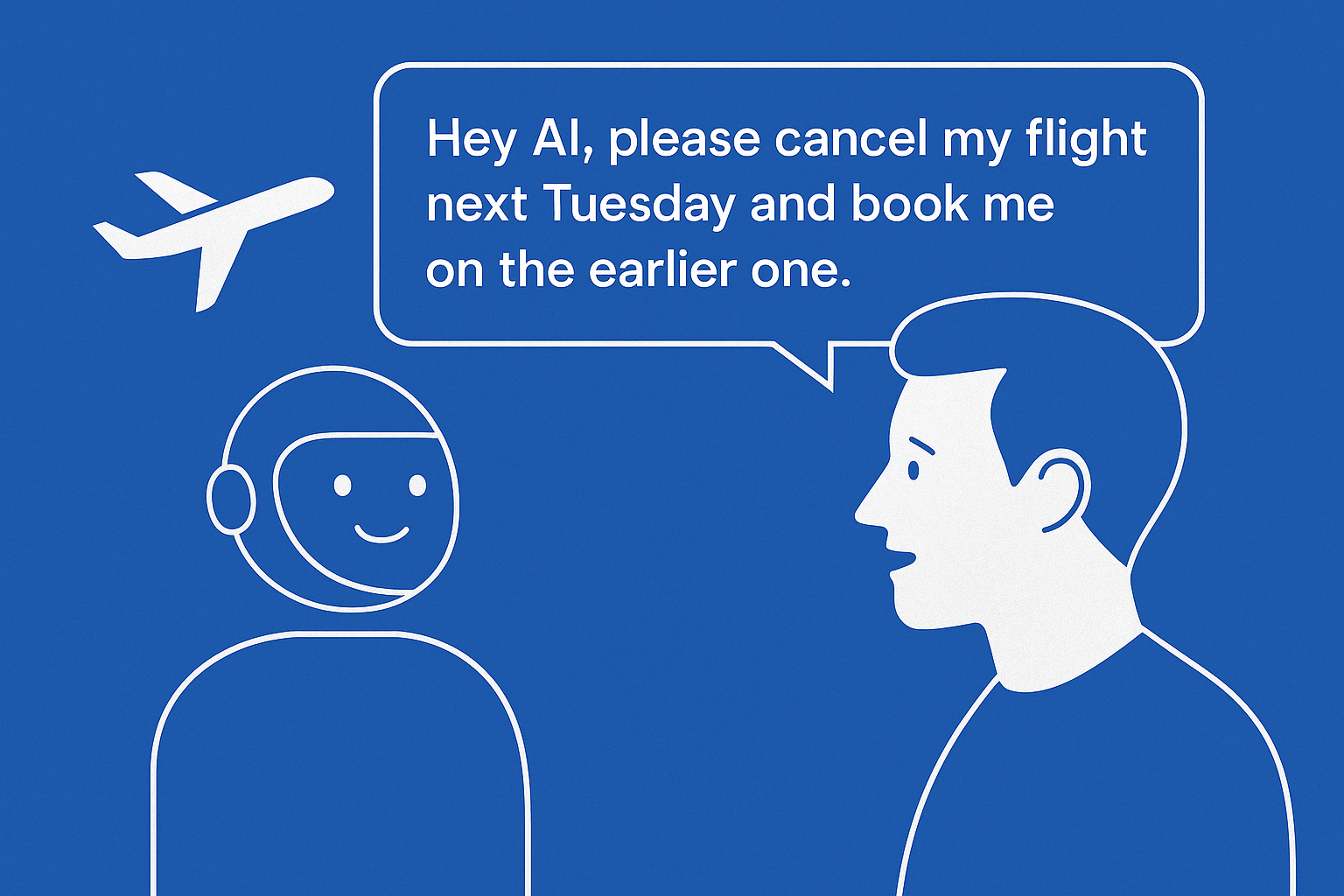Using AI-Extracted Insights from Contact Center Call Recordings to Reduce Customer Churn
Are you frustrated by customers leaving, and you wish there was something you could do to engage them proactively? Or are you looking for ways to actively contribute to your organization's bottom line?
Thanks to Generative AI-powered Conversation Intelligence, you can identify customers at risk early on and put processes in place to proactively improve customer experiences, enhance service quality, and reduce customer churn.
In the article below, I will show you several different ways how you can use AI Insights (insights extracted from the transcript of your recorded customer conversations using Generative AI) to drastically reduce customer churn.
How Recognizing and Reducing Customer Churn Impacts Profitability
Contact centers are often called the front lines or the first line of defense because most customer contacts with the company happen through them. As a contact center, you try to resolve issues, manage complaints, provide support, and much more. All these conversations include thousands of micro-signals - and let's face it, sometimes even glaring red flags - that a customer is about to cancel or switch to a competitor.
All these signals can be analyzed as patterns, which allow us to predict when a customer is at risk of leaving. This gives us an opportunity to not only offer incentives to that particular customer but also identify and eliminate problem areas such as poor customer service or perceived lack of value.
Recognizing and reducing customer churn is a big deal because it directly impacts a company's profitability and growth. According to Harvard Business Review, acquiring a new customer costs 5 to 25 times more than retaining an existing one. However, it isn't only cheaper to retain customers but also more profitable.
For example, Bain & Company found that an increase in customer retention by just 5% can lead to a 25-95% increase in profits. Existing customers are also more open to trying new products, more forgiving if they have a terrible experience, and more willing to refer friends.

How To Use AI-Extracted Insights To Identify Churn Risk
Using Generative AI to extract those micro-signals and to detect churn patterns can help you identify churn risk. Let's have a look at how you can use AI to accomplish this:
Asking Generative AI To Assess Churn Risk
One of the most obvious ways is to simply ask Generative AI to assess the churn risk and categorize each call accordingly. You can give as much or as little instruction as you feel is needed. For example, you can ask it to categorize calls based on different risk levels: low, medium, high, and “already churned.”
You can also give it instructions or background details based on your industry knowledge and experience. For example, if a customer calls for a price reduction for their upcoming renewal, this might be a significant churn signal. It will then analyze call sentiments and pick up on specific topics, phrases, or red flags to determine these risk factors.

Image: Screenshot of a "Churn Risk" report from MiaRec application that shows 3 calls/customers are at high risk of churn.
Sentiment Analysis
Another powerful way to detect churn risk is to analyze sentiment analysis. According to Forrester Research, "63% of people will leave a company after one poor experience." Generative AI will analyze the entire call for emotional nuances within the context of the call to determine Sentiment Analysis. Should the customer feel negative or very negative during the call and their issue wasn't resolved satisfactorily, they are likely to leave.
This data can be used to create priority lists for customer service agents, ensuring they address the most urgent cases first. You can now follow up with those flagged customers instantly to try to make it up to them. In addition, these calls offer deep insight into why customers are unhappy.

Image: Screenshot of Sentiment Analysis from MiaRec application showing a "Very Negative" call.
First Call Resolution (FCR) Rate
Resolving a customer issue in the first call is critical. Having to call multiple times, being transferred to other agents, and having to repeat the same information over and over is not only frustrating but often leads to customer churn. Generative AI can help you categorize calls as resolved in the first instance by extracting this insight from the transcript. Customers whose calls were resolved on the first call are much less likely to leave. Contrary, by identifying recurring issues or unresolved problems mentioned across multiple interactions, AI can detect customers who may be getting frustrated, signaling a potential churn risk.

Image: Screenshot from MiaRec application showing a "Call Resolution Report".
Detect and Respond to Competitive Mentions
When customers start talking about competitors during a call, it’s a clear signal that they might be considering switching. Catching these mentions early can help you step in before they make the leap. With Generative AI-powered tools, you can automatically detect when a customer brings up a competitor, giving your team a chance to respond quickly and effectively.
AI can scan conversations for competitor names or related phrases, flagging these mentions so you can prioritize follow-ups with those customers. Whether it’s a subtle comparison or a direct question about another company's offerings, these moments are valuable opportunities to reinforce the benefits of staying with your business.
In addition to flagging these mentions, AI can help uncover patterns—like whether certain products or services are more frequently compared to competitors. This insight can guide you in refining your messaging or offering targeted incentives to keep customers from leaving.
By detecting competitive mentions early, you’re able to address concerns head-on, highlight what sets you apart, and potentially offer solutions that keep the customer loyal—ultimately reducing the risk of churn.

Image: Screenshot from MiaRec's Topic Analysis automatically assigning a call with the topic "Competitors mentioned"
Call Categorization By Customer Status
It can also be helpful to get Generative AI to categorize calls by customer status. This could include prospects, customers, or even VIPs. This allows you to add another layer of insight to identify customers considering leaving you. For example, a call from a high-value customer displaying signs of dissatisfaction would be flagged much quicker than a routine inquiry from a prospect.
Customer Pain Points
Identify common pain points mentioned by customers. For example, if many customers complain about "long wait times," it might be time to improve your service efficiency. AI can aggregate this data to help prioritize problem areas.
Automatically Identify Frustrated Customers
When a customer is frustrated, it’s usually a sign they might be ready to walk away—and catching that frustration early can make all the difference. With AI tools, you can automatically spot when a customer is feeling upset by analyzing the emotional tone of their conversations and noticing patterns like repeated complaints.
For example, if someone is using negative language, cutting off the agent, or bringing up the same unresolved issues, it’s a pretty strong indicator that they’re unhappy. AI flags these calls, helping your team prioritize follow-ups with those customers before it’s too late. Plus, it can highlight common frustrations—like long wait times or unresolved problems—so you can tackle the root causes.
By automatically identifying frustrated customers, you’re able to step in, address their concerns, and turn the situation around—hopefully saving them from leaving.

Image: Screenshot from MiaRec showing a list of calls that where AI assigned negative topics, such as "Frustration" and "Problem with Service"
Proactive Outreach
Finally, you can use AI Insights to identify at-risk customers before they reach the point of cancellation. According to Gartner (2021), proactive customer service can significantly reduce churn rates. Implementing proactive outreach programs—like special offers or loyalty rewards—can keep customers engaged. Addressing customer complaints and pain points before they escalate increases customer loyalty and improves customer satisfaction.

Image: Screenshot from MiaRec showing calls with negative Topics being assigned a tag "Proactive Outreach". This list should be used for customer service reps to do proactive outreach.
Conclusion
These AI insights derived from call recordings can drastically improve your ability to identify and mitigate customer churn, ultimately leading to better customer retention and satisfaction. By implementing these seven ways, you can reduce your churn rate noticeably, resulting in increased profits and revenue.
You May Also Like
These Related Stories

How Contact Center AI Can Help Reduce Customer Churn

How To Gauge Customer Churn Risks Using Traditional vs. AI-Based Metrics


